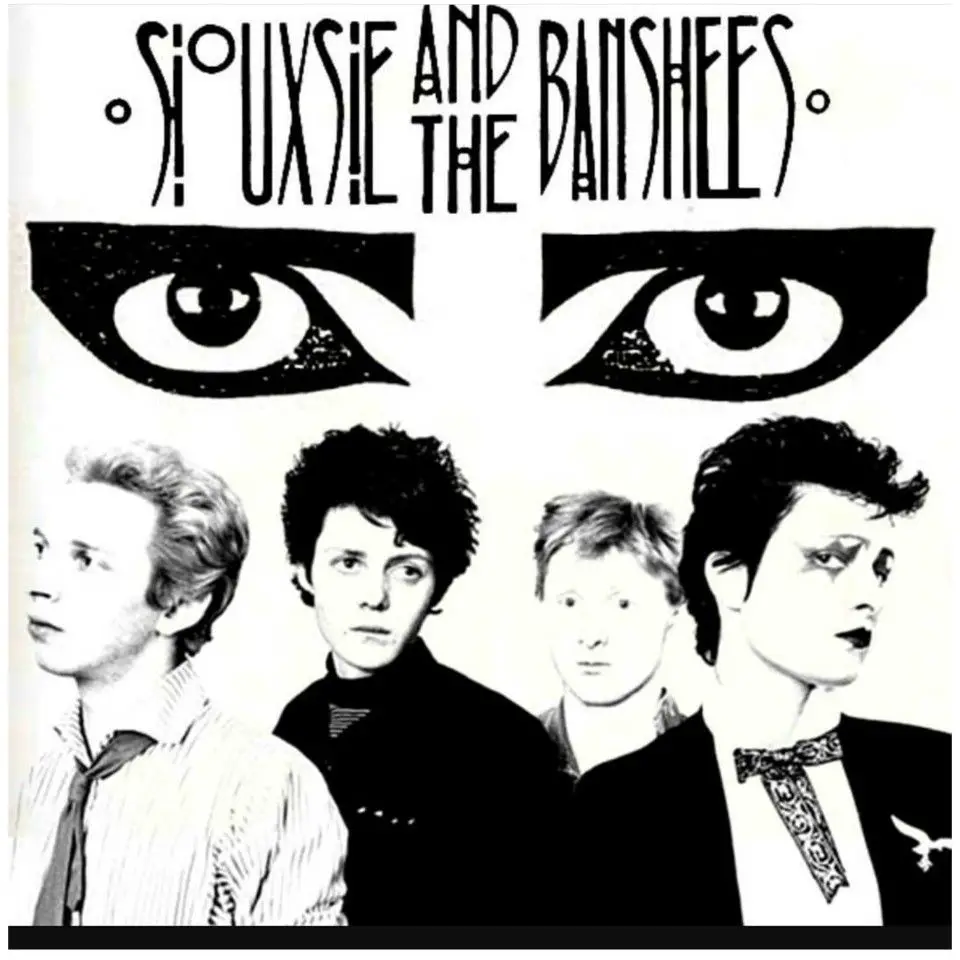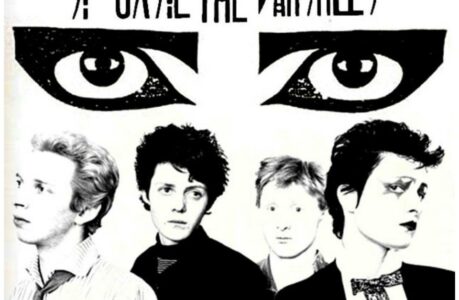Unraveling the mystique of Siouxsie and the Banshees, the enigmatic force behind the Gothic rock revolution.
The Beguiling Aura of Siouxsie and the Banshees
Siouxsie and the Banshees, an iconic name that echoes through the annals of alternative music history, embody the essence of enigma and innovation. From their inception in the late 1970s to their profound influence on subsequent generations, the band has carved a niche in the realms of post-punk, gothic rock, and alternative music. Let’s delve deep into the captivating journey of this band, exploring its history, musical style, key personnel, essential albums and tracks, enduring legacy, significant reviews, and similar bands that were inspired by their trailblazing artistry.
History and Development: From Punk Precursors to Gothic Icons
The genesis of Siouxsie and the Banshees can be traced back to the vibrant punk scene of late 1970s London. Emerging from the notorious Bromley Contingent, a group of fervent Sex Pistols fans, Siouxsie Sioux and Steven Severin formed the nucleus of the band. Joined by guitarist Marco Pirroni and drummer Sid Vicious for their debut performance at the 100 Club Punk Festival in 1976, the band’s raw energy and Siouxsie’s mesmerizing presence captivated audiences.
Their early releases, including the groundbreaking single “Hong Kong Garden” (1978), showcased a blend of punk aggression with eerie melodies and Siouxsie’s distinctive vocal style, foreshadowing their evolution towards a darker, more atmospheric sound. As the band transitioned from punk precursors to gothic icons, they underwent several lineup changes, with musicians like John McKay, Kenny Morris, and Budgie contributing to their sonic experimentation and artistic growth.
Type of Music: The Spellbinding Soundscape of Gothic Rock
Siouxsie and the Banshees pioneered the genre of gothic rock, crafting a spellbinding soundscape that intertwined elements of post-punk, new wave, and avant-garde aesthetics. Their music is characterized by haunting melodies, atmospheric arrangements, and Siouxsie’s ethereal vocals, which oscillate between seductive whispers and primal screams, evoking a sense of mystique and allure.
Drawing inspiration from diverse sources such as literature, art, and cinema, the band infused their compositions with themes of darkness, decadence, and the supernatural. Tracks like “Spellbound,” “Cities in Dust,” and “Peek-a-Boo” exemplify their sonic diversity, blending propulsive rhythms with enigmatic lyrics and innovative instrumentation.
Key Personnel: Icons of Alternative Music
Siouxsie and the Banshees comprised a roster of visionary musicians whose collective talents shaped the band’s distinctive sound and aesthetic. At its core were Siouxsie Sioux, the enigmatic frontwoman whose fierce charisma and vocal prowess mesmerized audiences, and Steven Severin, the creative force behind the band’s brooding melodies and atmospheric textures.
Throughout their illustrious career, the band collaborated with several accomplished musicians, including guitarist John McGeoch, whose inventive guitar work added a dynamic edge to their sound, and drummer Budgie, whose inventive percussion techniques imbued their music with rhythmic complexity and intensity.
Essential Albums: Exploring the Depths of Darkness and Desire
Siouxsie and the Banshees released a string of seminal albums that cemented their status as pioneers of gothic rock and alternative music. From their debut album, “The Scream” (1978), which introduced the world to their hypnotic blend of punk fury and avant-garde experimentation, to later masterpieces like “Juju” (1981) and “Tinderbox” (1986), the band traversed a sonic landscape of darkness and desire, exploring themes of love, death, and the supernatural.
“Juju,” in particular, stands as a crowning achievement in the band’s discography, featuring iconic tracks such as “Spellbound” and “Arabian Knights,” which epitomize their evocative blend of rhythmic intensity and melodic allure. Other essential albums include “Kaleidoscope” (1980), “A Kiss in the Dreamhouse” (1982), and “Peepshow” (1988), each offering a glimpse into the band’s ever-evolving sonic palette and lyrical imagination.
Essential Tracks: Captivating Tales of Darkness and Despair
Siouxsie and the Banshees have crafted a repertoire of timeless tracks that delve deep into themes of darkness, despair, and the macabre. These essential tracks showcase the band’s mastery of atmosphere, melody, and lyrical imagery, cementing their status as icons of gothic rock and alternative music.
1. “Spellbound” (1981)
Album: “Juju”
Description: With its driving rhythm, infectious hooks, and Siouxsie’s captivating vocals, “Spellbound” is a quintessential Siouxsie and the Banshees track. The song’s hypnotic energy and evocative lyrics create a sense of enchantment and intrigue, drawing listeners into the band’s dark and mesmerizing universe.
2. “Cities in Dust” (1985)
Album: “Tinderbox”
Description: A haunting anthem of urban decay, “Cities in Dust” blends shimmering guitars, pulsating rhythms, and Siouxsie’s ethereal vocals to create a sense of apocalyptic beauty. The song’s evocative imagery and infectious melody make it a standout track in the band’s discography, resonating with listeners long after its release.
3. “Happy House” (1980)
Album: “Kaleidoscope”
Description: A frenetic burst of energy, “Happy House” juxtaposes catchy melodies with dark, surreal lyrics, reflecting the band’s penchant for blending pop sensibilities with gothic aesthetics. Siouxsie’s playful delivery and the song’s infectious chorus make it a standout track that captures the band’s unique fusion of light and darkness.
4. “Christine” (1980)
Album: “Kaleidoscope”
Description: A haunting ode to obsession and longing, “Christine” showcases Siouxsie’s emotive vocals and the band’s atmospheric instrumentation. The song’s brooding atmosphere and hypnotic rhythm create a sense of tension and longing, drawing listeners into its dark and alluring embrace.
5. “Peek-a-Boo” (1988)
Album: “Peepshow”
Description: A departure from their earlier sound, “Peek-a-Boo” is a playful yet sinister track that showcases the band’s willingness to experiment with new sounds and textures. With its quirky samples, funky bassline, and Siouxsie’s enigmatic vocals, the song defies categorization, offering a glimpse into the band’s ever-evolving sonic palette.
6. “Dear Prudence” (1983)
Album: “Through the Looking Glass”
Description: Siouxsie and the Banshees’ cover of The Beatles’ classic “Dear Prudence” is a mesmerizing reimagining that transforms the original’s serene beauty into a haunting, atmospheric masterpiece. Siouxsie’s haunting vocals, backed by lush instrumentation, evoke a sense of ethereal melancholy that captivates listeners from start to finish.
Legacy and Significant Reviews: Echoes of Influence and Adulation
The legacy of Siouxsie and the Banshees looms large over the landscape of alternative music, inspiring countless artists and bands with their innovative sound and uncompromising vision. Their influence can be heard in the work of bands spanning genres from post-punk and gothic rock to shoegaze and indie pop, attesting to their enduring relevance and impact.
Critical acclaim has also followed the band throughout their career, with accolades from music critics and publications praising their groundbreaking albums and electrifying live performances. Albums like “Juju” and “Kaleidoscope” have been hailed as masterpieces of the genre, while singles like “Spellbound” and “Hong Kong Garden” continue to resonate with listeners worldwide, earning a place in the pantheon of alternative music classics.
Similar Bands: Exploring the Gothic Pantheon
Siouxsie and the Banshees paved the way for a multitude of bands that embraced the dark allure of gothic rock and post-punk, each adding their own unique twist to the genre. Bands like The Cure, with their melancholic melodies and introspective lyrics, and Bauhaus, with their brooding atmospheres and theatrical flair, owe a debt of gratitude to Siouxsie and her Banshees for blazing a trail of sonic exploration and artistic innovation.
Other notable bands inspired by Siouxsie’s enigmatic allure include Sisters of Mercy, Cocteau Twins, and Joy Division, each carving out their own niche in the vast landscape of alternative music while paying homage to the pioneers who paved the way for their creative endeavors.
Siouxsie and the Banshees
In the annals of alternative music history, few bands command the same reverence and admiration as Siouxsie and the Banshees. With their visionary sound, evocative lyrics, and magnetic stage presence, they transcended the confines of genre and convention, forging a path of artistic exploration and sonic innovation that continues to resonate with listeners to this day. As we unravel the mystique of Siouxsie and her Banshees, we discover not only a band, but a transformative force that reshaped the landscape of alternative music and left an indelible mark on the hearts and minds of fans around the world.

